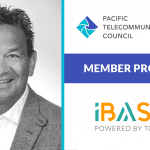
In July, we were confronted with an unenviable statistic: a UN report said global e-waste surged 21 percent over five years. As bad as it is, we also see the industry in a position to do better and help others do better.
Remote working practices will certainly have a positive environmental impact, but it also means there will be new challenges and risks, said commentators. Many virtual processes will now be permanent, so get ready, said one Pacific telco executive. Networks will face “new pressures.” Existing IT infrastructure may simply not meet the demands of the modern digital workplace. Meanwhile, WAN management was in focus.
Overhead, we mulled keeping space “green and clean.” Implementing new commercial remote sensing regulations kept some busy. With some irony, we heard that the space industry itself needs to do more remote working. Experts acknowledged headwinds in the commercial launch industry and a possible post-pandemic recalibration.
OneWeb was rescued, but will it prove to be an innovation driver or a wasteful bailout? Astronomers sighed about possible observational interference from satellite constellations. In the Pacific, Kacific1 upgraded connectivity in Tuvalu.
Subsea is making its own positive contribution as cables are configured as dedicated seabed seismology detectors. Google researchers delved into possibilities too. The Japan-Guam-Australia North and the Manatua One Polynesia systems achieved ready for service status. Seaborn Networks announced emergence of Seabras-1 Entities from Chapter 11. Google announced the Grace Hopper cable, linking U.S., U.K., and Spain.
Leading the Great (Digital) Acceleration
Leadership ideas continued to emerge. Telco executives reflected on their pandemic experiences. Experts said 5G operators need to cultivate a “human side” for success. CIOs were encouraged to explore tech alignment, innovative solutions, and continuous leadership.
Post-pandemic, some foresee “a great acceleration” but increasing socioeconomic gaps. Experts said leadership thinking is already seeing shifts in the “new normal.” Gender equality, inclusive practices, digital accessibility, change management, and even the protection of children online are popping up on various agendas.
In Asia-Pacific, experts predicted acceleration in the digitization of the food supply chain. Human capital, particularly Asia’s youth, was seen as vital for economic progress. Some predicted massive e-learning program demand and new telco partnerships.
Governments were active. Australia inaugurated a Broadband Advisory Council, and assessments of the changing digital landscape and tech market outlook were on offer. New Zealand sought further consultation on draft fiber input methodologies. Singapore announced an intense commitment to digital hubs in its communities.
Industry structures continue to adjust. In ASEAN, experts said OTTs now dominate the connectivity agenda. For some in Asia-Pacific, new Internet connectivity demands balancing risks and benefits for new users. After massive investment by OTT players, commentators decided India may be the next frontier in mobile and digitalization infrastructures.







